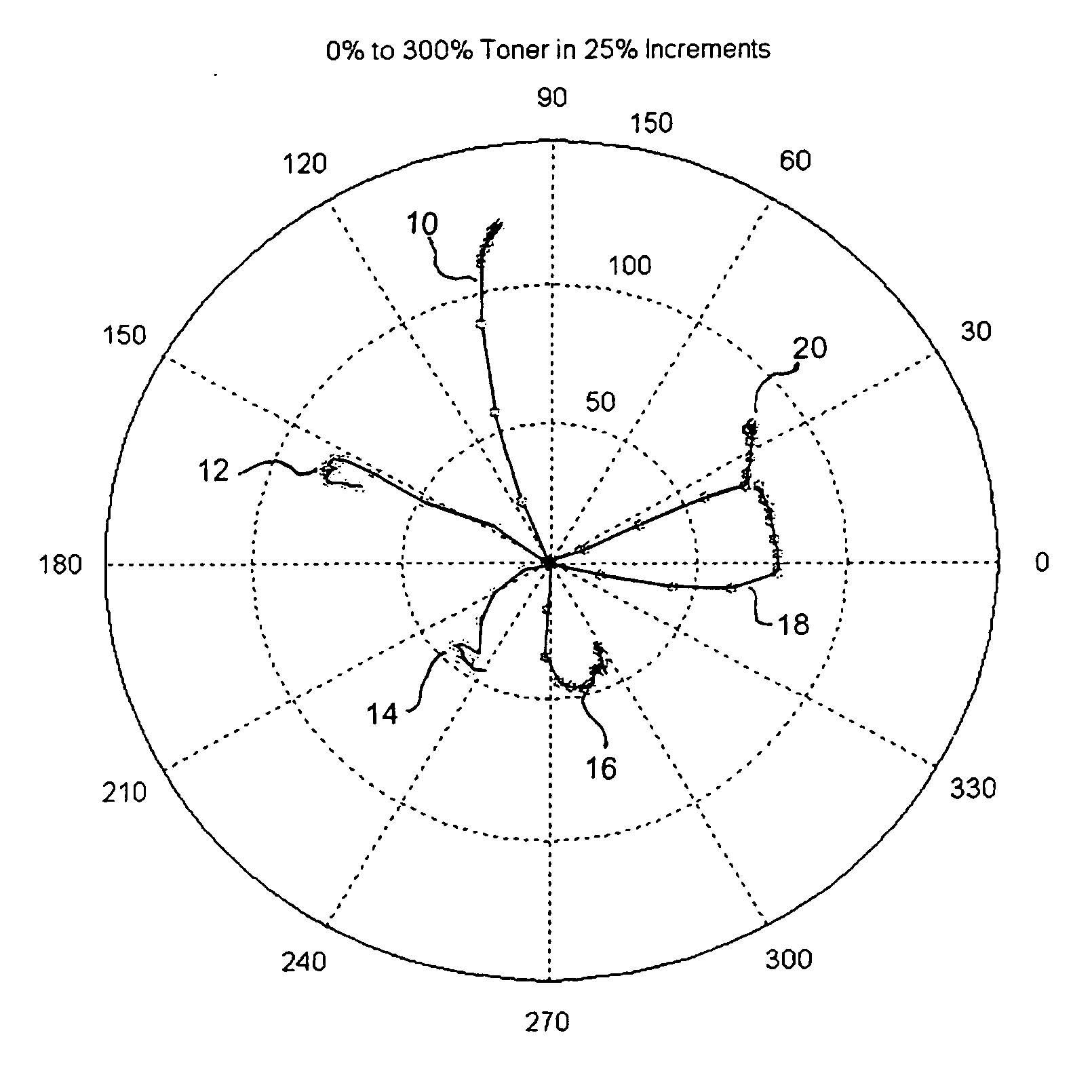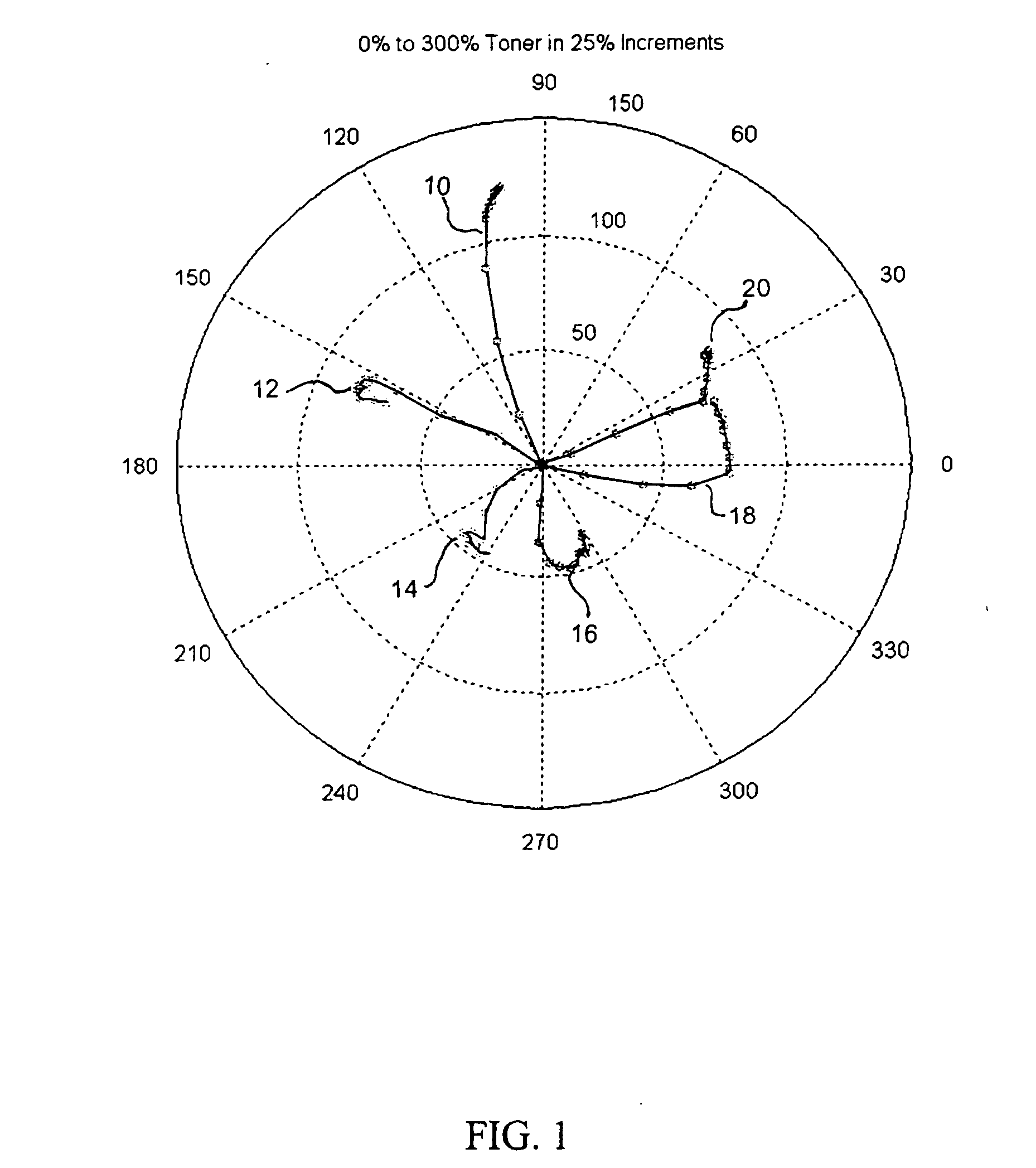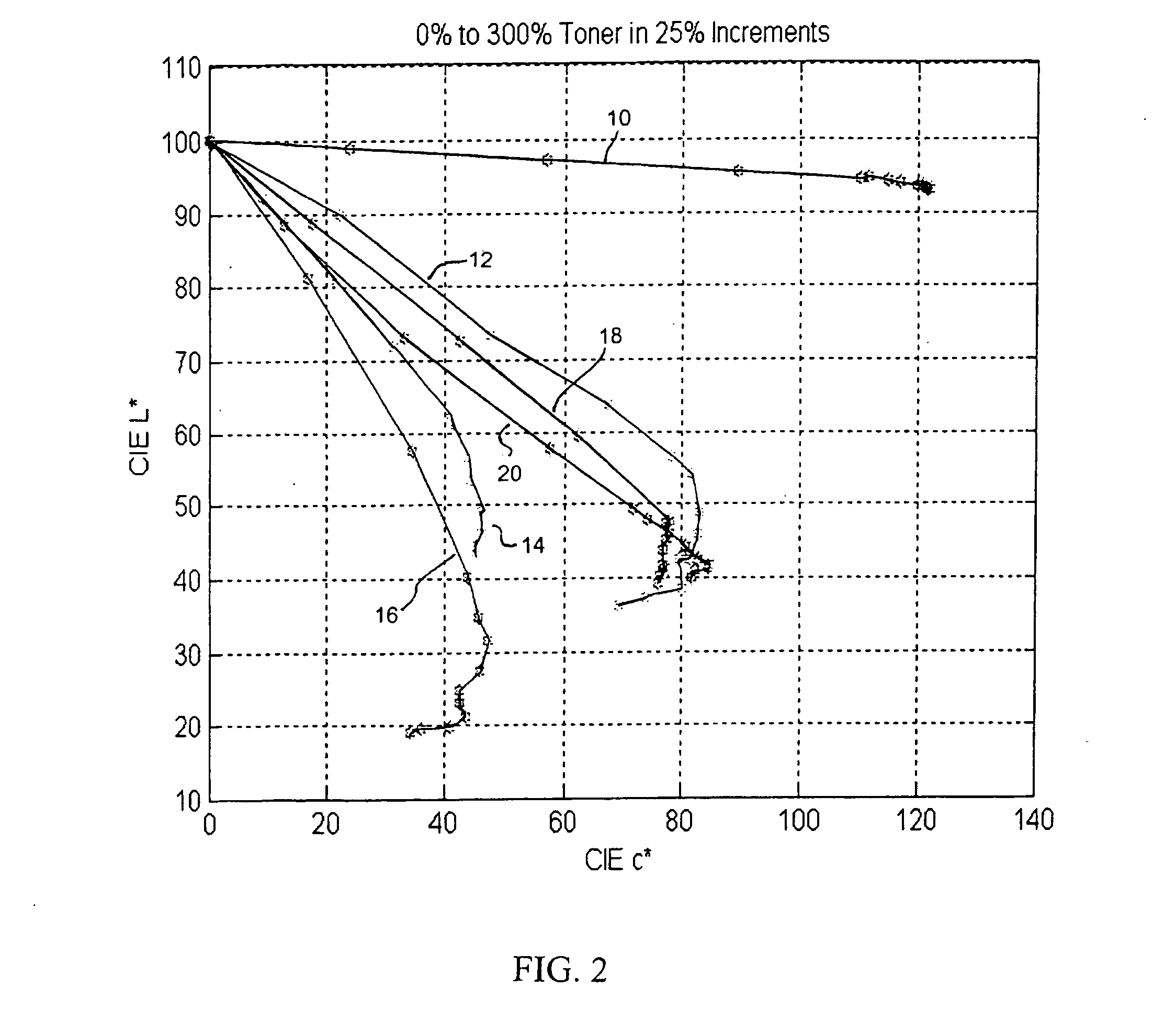Photographic printer using hyper-pigment loaded toners
a toner and photo printer technology, applied in the field of toners, can solve the problems of high level of toner deposition, excessive amount of toner deposited on the media sheet, and loss of shadow color, and achieve the effects of high magenta pigment load, high yellow pigment load, and high cyan pigment load
- Summary
- Abstract
- Description
- Claims
- Application Information
AI Technical Summary
Benefits of technology
Problems solved by technology
Method used
Image
Examples
example 1
Hyper Pigment Loaded Toner Gamut Ranges
[0029] Hue versus chroma characteristics for hyper pigment loaded toners were simulated by printing and fusing paper media with patches containing up to 300% primary toners. Specifically, cyan, magenta, yellow, red, green, and blue toners were printed and fused using the cardstock mode. Hewlett-Packard glossy paper was used with a normal cardstock fusing temperature. Toner concentrations of 0% to 300% in 25% increments. Toner concentrations of 125% to 300% were simulated by repeatedly printing and fusing the receptive paper media. For example, the 300% point was simulated by printing the target media with 100% of a selected toner, followed by fusing, and repeating the printing and fusing steps two subsequent times. The 150% point was simulated by printing the target media with 100% of a selected toner, followed by fusing, and a separate printing of the target media with 50% of the toner, followed by a final fusing step.
[0030]FIG. 1 shows meas...
example ii
Color Ramp Extensions to Black
[0033] Lightness versus chroma characteristics for the cyan, magenta, yellow, red, green, and blue toners were tested by extending each color ramp (represented by reference number 22) from the 100% pigment point (represented by reference number 24), 200% pigment point (represented by reference number 26), or 300% pigment point (represented by reference number 28) to black (i.e., CIE L* approaching a value of 0), as illustrated in FIGS. 3 through 8. Specifically, K pigment was incrementally added to toners containing 100%, 200%, or 300% pigment loads and spectrophotometrically measured for chroma and lightness to determine potential increases in shadow color gamut that can be achieved with hyper pigment loaded toners. As generally shown in FIGS. 3 through 8, toners having a pigment load of 200% (26) and 300% (28) showed significant increases in shadow color gamut. Gamut gains can be achieved for each of the cyan, magenta, yellow, red, green, and blue to...
PUM
 Login to View More
Login to View More Abstract
Description
Claims
Application Information
 Login to View More
Login to View More - R&D
- Intellectual Property
- Life Sciences
- Materials
- Tech Scout
- Unparalleled Data Quality
- Higher Quality Content
- 60% Fewer Hallucinations
Browse by: Latest US Patents, China's latest patents, Technical Efficacy Thesaurus, Application Domain, Technology Topic, Popular Technical Reports.
© 2025 PatSnap. All rights reserved.Legal|Privacy policy|Modern Slavery Act Transparency Statement|Sitemap|About US| Contact US: help@patsnap.com



